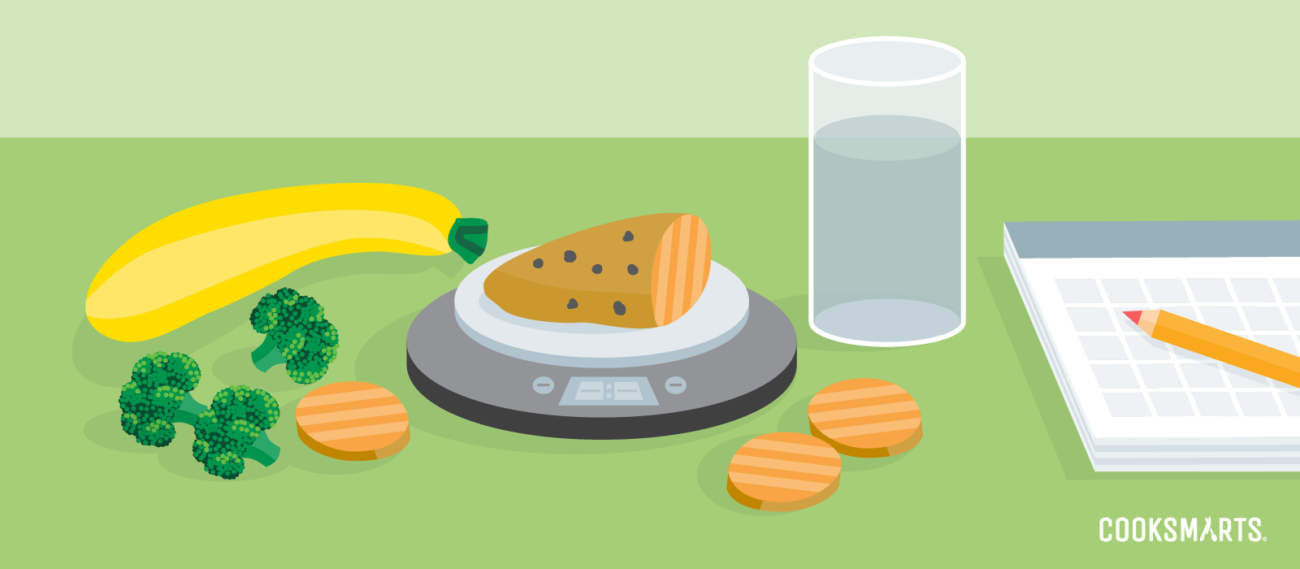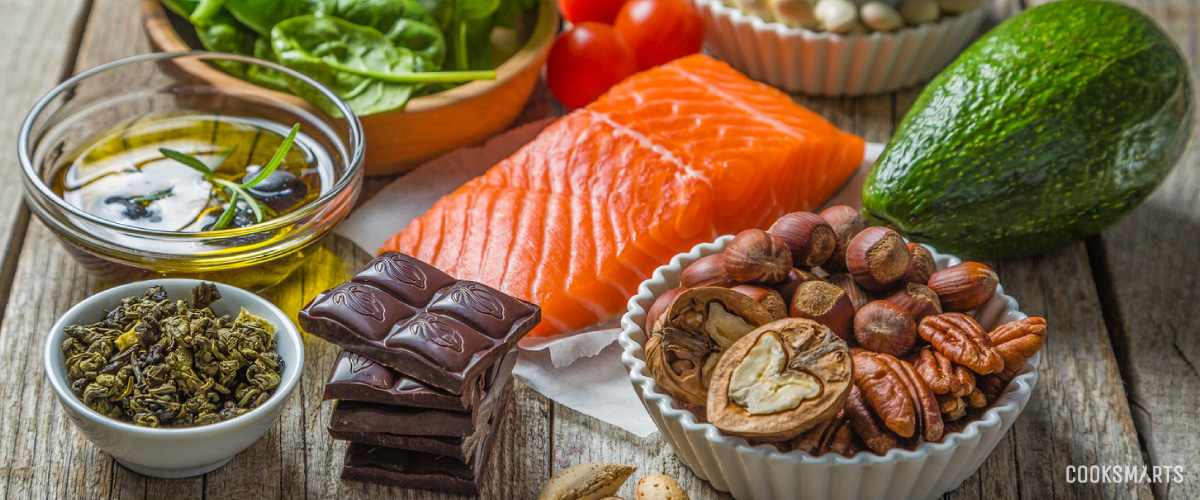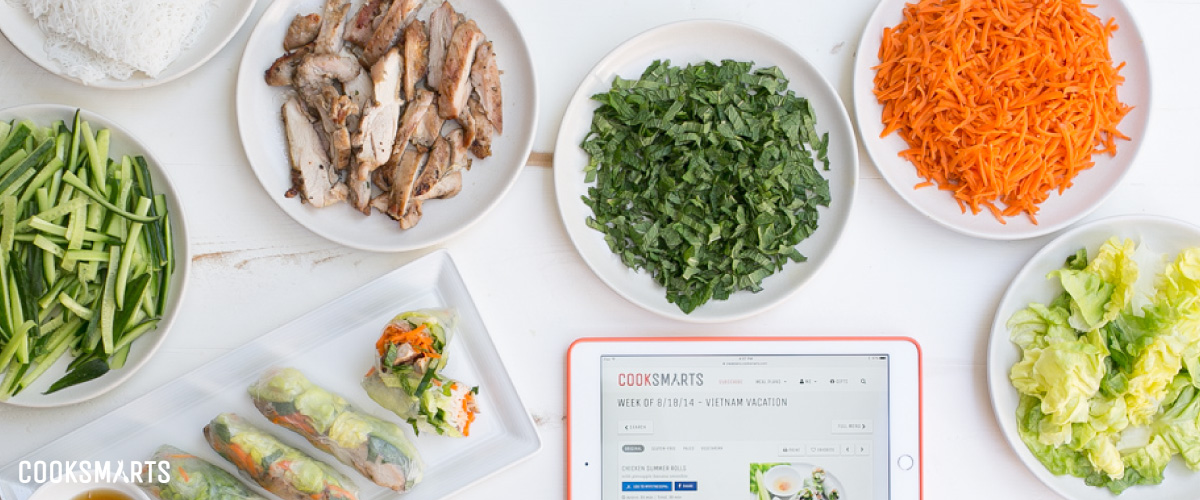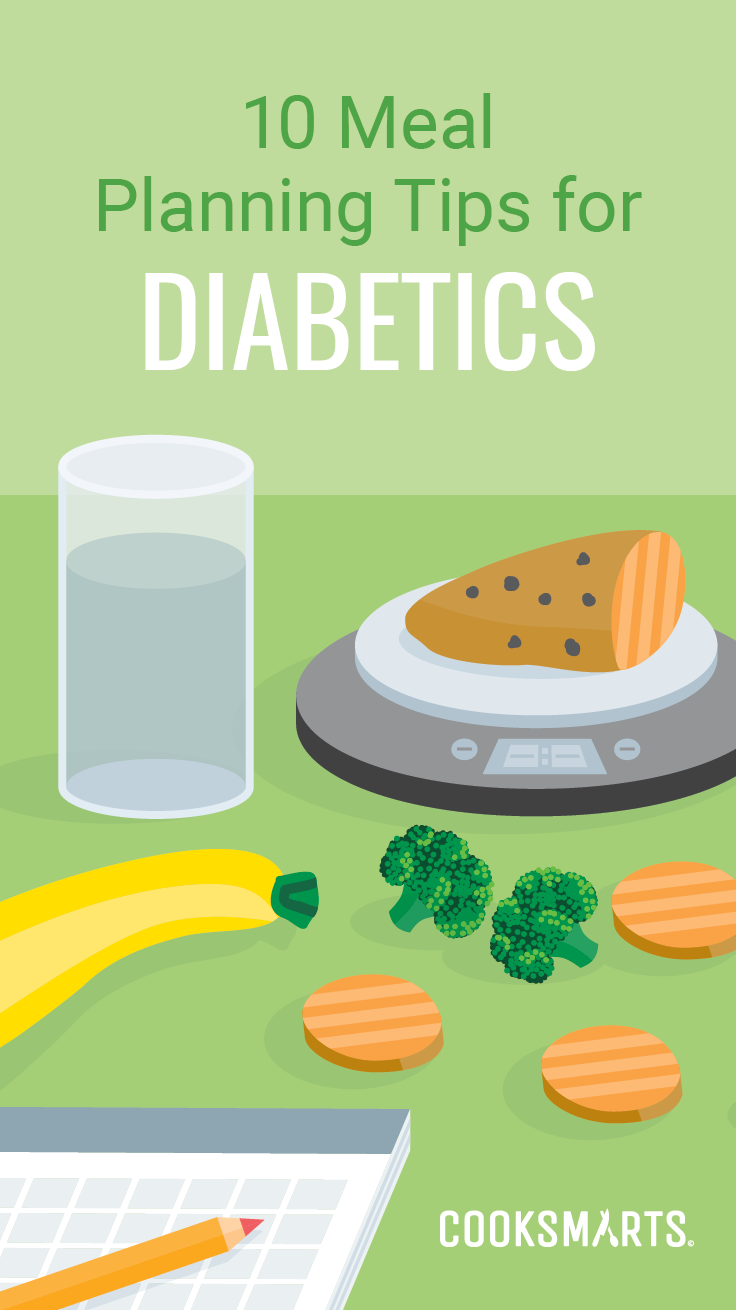10 Meal Planning Tips for Cooking with Diabetes
Since type 1, type 2, and prediabetes all involve high blood glucose, managing meals becomes a crucial skill in the health and well-being of a diabetic. But, planning satisfying meals can be hard. Read on for our 10 tips to help you understand how to better manage diabetes through food and make smart diabetic meal plans!
Whether you have diabetes or someone you love has been diagnosed, it is important that friends and family are able to share a meal and make memories around dinner table. It may feel overwhelming to honor everyone’s restrictions, allergies, and preferences, but it doesn’t have to be.

With the right plan, you can put joy back into your cooking as you cater any dish to your lifestyle and your dinner guests.

10 Meal Planning Tips for Diabetics
1. Understand Your Carbohydrates
The 3 main types of carbs are sugars, starches, and fibers. Sugars are generally simple carbs that are quickly digested, starches are complex carbs that take longer for the body to break down, and fibers are indigestible carbs.
Keep in mind that simple carbs aren’t always “bad” and complex carbs aren’t always “better” for someone with diabetes. The effect of a simple or complex carbohydrate on blood sugar levels is accurately understood through glycemic index ranking.
2. Have a Glycemic Index Chart Handy
Although studies show that the amount of carbs in a food you eat is the best predictor blood glucose response, checking the glycemic index (GI) of a food is always a good idea. The GI ranks carbohydrates based on both the increase in blood glucose levels and the speed in which they rise after eating a particular food. Here are the GI rules:
- Low = 0-55
- Medium = 56-69
- High = 70+
A quick GI check is especially helpful if you are at the grocery store or eating out and can’t count carbs. Here are two convenient GI search engines – Diet Grail and Glycemic Index.
3. Count those Carbs
Counting carbs may sound tedious, but it is an essential step for a diabetic who wants to avoid future health complications. When grocery shopping, always look at food labels and pay close attention to both the grams of total carbohydrates and the serving sizes.
4. Get App Happy!
There are many apps out there that can help diabetics count carbs and manage their food life right from their smart phone, iPad, or tablet. Here are a few of our favorites:
- Fooducate helps users actually understand the pros and cons of particular foods while setting weight loss goals. This free app lets you seamlessly input meals and track your carbs, proteins, and fats.
- Glucosio is a free app that keeps track of your A1C, blood pressure, ketones, cholesterol, weight, and more. It also provides daily, weekly, and monthly graphs and analysis, and lets you anonymously contribute to diabetes research if you so choose.
- MyFitnessPal is a free website and mobile app that helps you customize your diet goals and take control of tracking with the largest nutrition and food database (over 300 million foods!). But wait, it gets better! Our meal plans integrate directly with the app to make eating and tracking a cinch. Read on for more info on our helpful features.
- MyNetDiary Diabetes Tracker has a food database, barcode scanner, carb counter, and many more features. It is made for managing type 1, type 2, prediabetes, and gestational diabetes, and only costs $3.99.
- If your style is a little more old school, grab a pen and fill in an inspirational food and fitness journal.
5. Embrace Unprocessed Foods
Eating the healthiest kinds of carbs is actually quite simple – stick to unprocessed vegetables, fruits, beans, and whole grains. When foods are fresh and natural, they give your body the most vitamins, minerals, fiber, and phytonutrients.
Also, the more finely a grain is ground, the more quickly it is digested and absorbed. If you eat grains in their whole form, they will digest more slowly and won’t create a sharp spike in blood glucose levels like milled and refined grains do. To enjoy some grains, embrace brown rice and whole oats! (Learn more about incorporating whole grains into your diet with our infographic Guide to Whole Grains.)
6. Don’t Forget Fiber
Fiber is a type of carbohydrate, but when you plan low-carb meals, make sure you get enough fiber. The ADA recommends women have 25 grams per day and men have 38 grams per day. Foods that are high in fiber usually don’t contain a large amount of carbs that will actually be digested and absorbed. Instead, high-fiber foods slow digestion rates, cause a lower blood sugar rise, regulate sugar use in the body, and help you have healthy hunger levels.
7. Plan Meals that Help You Slim Down
There are several medical conditions that can develop if a person with diabetes does not properly manage the disease. Being overweight is a major factor that increases the risk for additional health complications. Use effective meal planning to reduce your weight by even a few pounds, which can really make a difference.
Weight loss is also crucial for those who have been diagnosed with prediabetes. Borderline diabetics have the opportunity to make lifestyle changes that can bring their blood glucose levels back to a normal range naturally and permanently. Below we walk you through the unique features of our meal plan service that can empower you to shed extra pounds.
8. Keep the Right Balance
The American Diabetes Association (ADA) says that there is actually no ideal ratio of calories diabetics should be getting from carbohydrate, protein, or fat. Every person’s body is different. Below are a few of their guidelines, but it’s always a good idea for you to check with your doctor and see a nutritionist.
- Reduce sodium to 2,300 mg / day
- Eat healthy fats in small amounts, replacing saturated with unsaturated fats
- Choose lean proteins and meat alternatives
- Moderate all alcoholic beverages
9. Control Your Portions
The USDA has compiled data showing the stark difference between portion sizes in 1984 and 2004. In the 80s, an average blueberry muffin was 290 calories less than it is today. Even something seemingly safe like a chicken caesar salad was 400 calories less.
Since weight has a significant impact on diabetes management, make portion control a cinch with a handy travel plate like Precise Portions, which doesn’t let you cheat. The ADA recommends filling the largest section with non-starchy vegetables, grains, and starchy foods in one small section, and protein in the other section. Adding a small serving of fruit and / or dairy is great, too.
10. Think About Alternative Diets
According to the American Diabetes Association, 10% of people with type 1 diabetes also have celiac disease. They also point to research that shows a vegetarian / vegan diet can help prevent and manage diabetes.

Cook Smarts Can Help You Manage Diabetes
Now that you have 10 tips to help you manage your diabetic diet better, let our meal plan service bring more ease to your meal planning.
Cook Smarts is a weekly meal plan service that takes the stress out of cooking healthy dinners and helps you take control of your diet in delicious ways. We give you a highly customizable weekly menu, access to hundreds of archived recipes, and tools to improve your understanding of food.
Here are 5 of our meal plan service features that can equip you for a healthy diabetic life:
1. Smart Nutrition Facts
Our advanced nutrition facts on every recipe allows you to see exactly which ingredients are giving you carbs, proteins, sugars, etc. This enables you to make simple cuts or substitutions to lower your sugar or up your fiber on any meal you want. With our smart facts, you can make any recipe a low carb recipe. See this feature in action here!
2. Recipe Options
When you’re on a diabetic diet, it’s important to know what foods to avoid. Since the ADA reports that a vegetarian / vegan or gluten-free diet may help diabetics, our meal plan service is a perfect fit. Our weekly menu allows you to mix and match four recipe versions (Original, Paleo, Vegetarian, and Gluten-Free) so you won’t get bored and feel the urge to splurge on meals that may not be diabetic-friendly.
“My youngest son has relocated to Texas from Utah and is staying with me. I’m a low carb T1 diabetic and he’s vegetarian heading into veganism. As I planned this week’s meals, Cook Smarts was so helpful!”
– Denise B. (Member since Nov 2016)
3. Adjustable Serving Sizes
Another handy recipe feature we provide is the ability to adjust serving sizes to any number you want. This can help with portion control and enables you to plan for leftovers so you never find yourself without a diabetic-friendly meal!
4. MyFitnessPal
We integrate directly with the largest nutrition and calorie database. MyFitnessPal is a free website and mobile app that helps you take control of your diet by making food tracking quick and easy. See how to easily track our meal plan meals with MyFitnessPal here.
5. Weight Watchers Points
If you are using Weight Watchers to lose weight, every one of our recipes gives you Weight Watchers Smart Points and Points Plus.
We are thrilled to provide one of the best meal plan services that makes a diabetic diet easier than ever! You really can cook low carb meals, lose weight, and enjoy every bite.
If you have other helpful tips for meal planning with diabetes, leave us a comment below!
As always, we’re here to help you live your best life in the kitchen and provide delicious memories for you and your family. Join our cooking community by signing up for our newsletter below, and we’ll send you great cooking tips and resources that will help you raise your kitchen IQ and cook with confidence.
A little note: Some of the above links are Amazon affiliate links, which means we earn a small percentage from those sales. We use this affiliate revenue to support the continued growth of Cook Smarts. Thank you!

